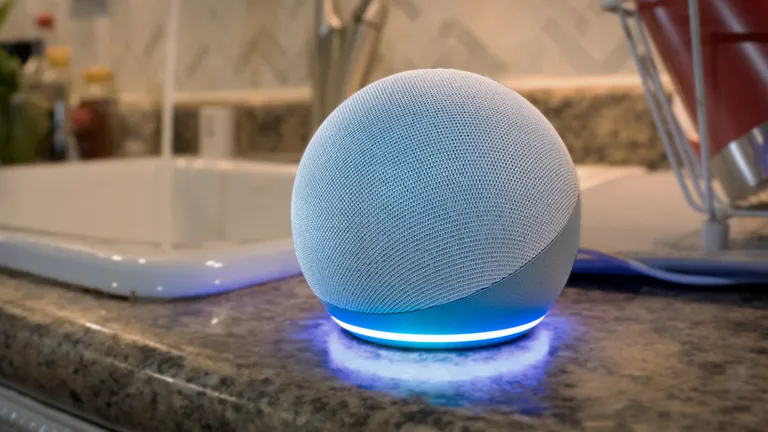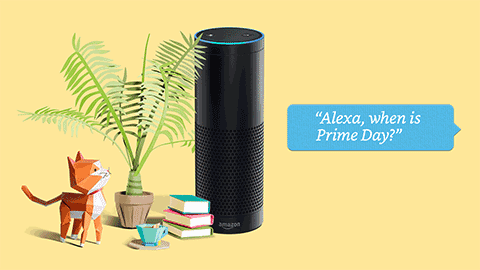
A crystal ball would be apt right about now to see what the future holds. ÄŸŸ” ® We’d probably be bombarded with advertisements on the crystal ball as well! However, have you thought of what the future for advertisements would sound like?ÄŸŸ ¤”

We’ve integrated voice-enabled devices at work and at home and advertisers have figured out these voice-enabled devices provide a niche market for paid advertising, which currently does not exist. Presently, businesses, anything from IT to construction and roofing, are still employing traditional as well as digital marketing mediums to advertise their services and improve company’s growth. However, audio advertising can be incorporated in voice-enabled devices once their popularity kicks in.
Not to mention, traditional advertising strategies are still quite effective at producing results. That is why businesses hire advertising agencies to promote themselves through Dynamic Creative ads, billboards, social media posts, and so on. However, when it comes to the future, audio advertising could be king.
Christi Olson, Microsoft’s head of evangelism for search, stated that advertising is not yet supported on these platforms because the consumer trust just isn’t there yet. ÄŸŸ ¤ ·”â™‚ï ¸ Of course, to no surprise, after running surveys it is noticed that consumers are just wary of how their data is being used and what devices are listening to. Devices do not listen to entire conversations and send them over to the CIA (what do you guys even converse about? Hmmm ÄŸŸ ¤ £). Most of these devices have “wake words” which are trigger words that awaken the device when spoken out.

As consumers are not aware of the technology behind these voice-enabled devices, they are forced to believe these devices have access to everything that is being said. ÄŸŸ‘‚ This mindset can only be changed with technology companies creating experiences that better educate the consumers, so they are aware how the technology they so frequently use, works. With consumers not really being on board with such devices, marketing companies have found it hard to pump out advertisements via these devices, but this is a massive opportunity waiting to be tapped. ÄŸŸ˜ ¯ As of January 2018, Alpine.AI has recorded that there have been over one billion voice searches per month on smart assistants.
With consumers using these voice-enabled devices to make their lives easier and to meet their needs, companies like Microsoft, Apple, Google and Amazon are being smart and not integrating advertising just yet. ÄŸŸ ¤” They do not want to alienate users as these voice-enabled devices still need to amass a 100% trust from the consumers’ side. Heck, I still believe my inner voice even when Google Maps is clearly directing me in the opposite direction. ÄŸŸ˜‚
With Facebook having started as a platform where no advertising was going to come in, times have changed and now Facebook and YouTube are one of the biggest platforms where relevant advertising keeps popping up. ÄŸŸ’ » Once consumers were familiar with these social platforms, companies realized they can bank on the fact that users spend a considerable amount of time on these platforms and started pumping out advertisements. Don’t even ask me how many shoes’ I’ve ended up purchasing because of the offers pop-up while I’m listening to a Drake song. ÄŸŸ‘ ÄŸŸ™ˆ All of the apps we use collect data on our browsing history, and personalise the ads we see based on the data they’ve recorded. So really, it’s no different from more traditional forms of advertising where a company will look at the demographic of an area and adapt their advertising to better suit it. This Experiential marketing agency here, for example, uses guerilla advertising as a way to reach certain markets that other forms of advertising wouldn’t reach.

As long as the ads are complementary to what [users are] looking for versus interruptive or intrusive, consumers would be fine with that,” said Doug Chavez, senior vice president of digital commerce at Geometry Global. “One of the things that’s interesting – if you look at millennials, they are happy to give their data away if it makes their experience better. It’s just a matter of looking at the data you have and how does that magnify rather than dilute [users’] experience.” That’s why new-age advertising often includes memes and video content for the promotion of any product. Marketing companies (like Marketing Memetics) tend to use a creative testing technique to know about the interest and inclination of people toward a trendy subject and make marketing strategies based on that. Those companies that use newly designed promotion practices seem to have an upper edge over their competitors who rely on traditional methods.
An interesting example was when Google Home users were annoyed when Google Assistant reported ‘Disney’s live-action Beauty and the Beast opens today’ after it delivered the time, weather and travel update. If someone is not interested in Beauty and the Beast, they don’t have kids or simply because this was information they found useless, the future would lead to a lot of angry consumers of voice-enabled devices. ÄŸŸ˜ ¡ This ad was taken down. However, for brands to reach consumers, it is important to have content optimization where the search made by consumers is what drives the adverts.
Building a presence on voice platforms with Alexa or Google Home is easier by brands attaching their name or a product as a response to a question posed by the consumer. ÄŸŸ’ ¬ For example, a brand like WebMD can create a curated response advertising a pharmacy tablet around a question like, ‘what are the symptoms of the flu.’ Other opportunities such as a voice-activated coupon, were tested out by Target and Google earlier this year which means its more than just advertising. ÄŸŸ˜ ®
Voice is easier than typing, so you’ve got consumers moving to voice-enabled devices at a rapid pace and companies will follow. ÄŸŸ ¤ ³ Can you image going to Dubai Mall and your smart assistant lists out the best offers your favorite stores have? Some exciting things to look forward to in the future!
Sources
[1]
Written and Researched by Serena Sibi


